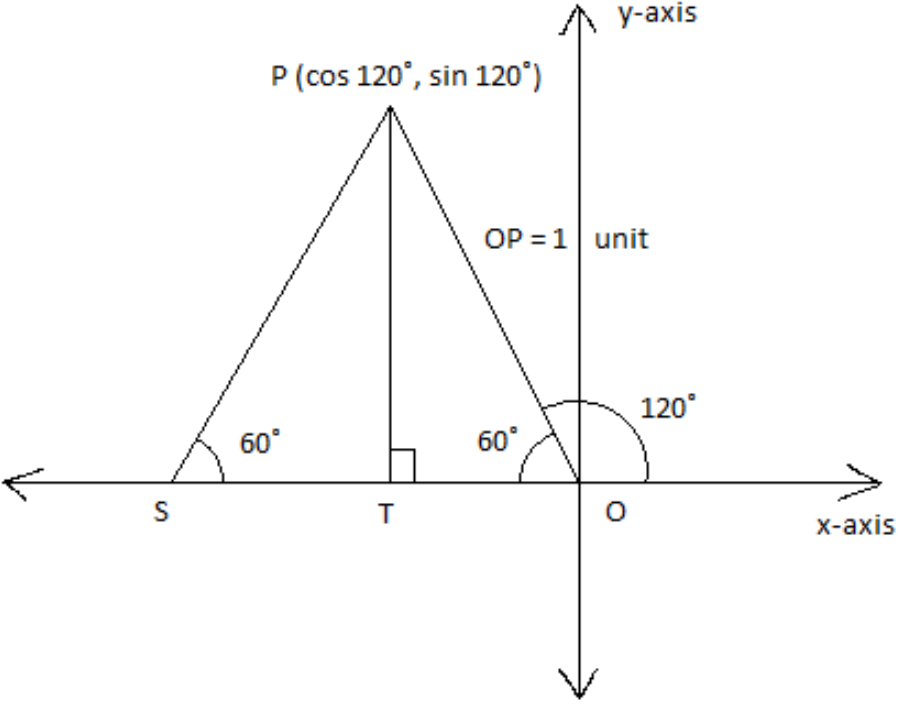
Find the value of
Answer
489.9k+ views
Hint: In a right-angled triangle with the length of the side opposite to angle θ as perpendicular (P), base (B) and hypotenuse (H):
If a point P is at a distance
Find the coordinates of a point which is 1 unit far from the origin and makes an angle of
Complete step by step answer:
Let us mark a point P on the graph paper, at distance of 1 unit from the origin, such that OP makes an angle of
From the definition of trigonometric ratios, we know that the x-co-ordinate of the point P is the value of

The
∴
Also,
∴
⇒
It means that the coordinates of the point T are
Since the point P is on the perpendicular line at point T, its x-co-ordinate must also be the same as that of T, i.e.
It follows that
Note: Now that we know the lengths of OP and OT, we can use Pythagoras' theorem and find PT as well, which is the y-coordinate of P, i.e.
Rule of CAST: In the IV, I, II and III quadrants,
Trigonometric Ratios for Allied Angles:
If one trigonometric ratio is known, we can use Pythagoras' Theorem and calculate the values of all other trigonometric ratios.
If a point P is at a distance
Find the coordinates of a point which is 1 unit far from the origin and makes an angle of
Complete step by step answer:
Let us mark a point P on the graph paper, at distance of 1 unit from the origin, such that OP makes an angle of
From the definition of trigonometric ratios, we know that the x-co-ordinate of the point P is the value of

The
∴
Also,
∴
⇒
It means that the coordinates of the point T are
Since the point P is on the perpendicular line at point T, its x-co-ordinate must also be the same as that of T, i.e.
It follows that
Note: Now that we know the lengths of OP and OT, we can use Pythagoras' theorem and find PT as well, which is the y-coordinate of P, i.e.
Rule of CAST: In the IV, I, II and III quadrants,
Trigonometric Ratios for Allied Angles:
If one trigonometric ratio is known, we can use Pythagoras' Theorem and calculate the values of all other trigonometric ratios.
Recently Updated Pages
Master Class 12 Economics: Engaging Questions & Answers for Success

Master Class 12 Maths: Engaging Questions & Answers for Success

Master Class 12 Biology: Engaging Questions & Answers for Success

Master Class 12 Physics: Engaging Questions & Answers for Success

Master Class 12 Business Studies: Engaging Questions & Answers for Success

Master Class 12 English: Engaging Questions & Answers for Success

Trending doubts
Which one is a true fish A Jellyfish B Starfish C Dogfish class 10 biology CBSE

Which tributary of Indus originates from Himachal Pradesh class 10 social science CBSE

Distinguish between ordinary light and laser light class 10 physics CBSE

What is the past tense of read class 10 english CBSE

In which type of rock coal is found A Igneous rock class 10 social science CBSE

What is the past participle of wear Is it worn or class 10 english CBSE




